- Administrator
- Albums and Singles
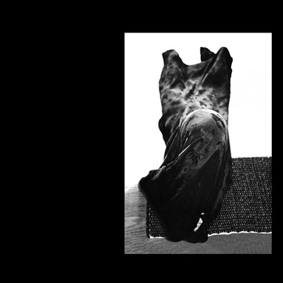 I am sure that working under the shadow of a massively influential father (Graham, in this case) is not an enviable position, but Klara's brief and enticing debut is unusual and eerie enough to avoid any annoying comparisons or unmet expectations.  Culled from field recordings made in Europe, Russia, and Turkey, Lewis' pieces sculpt a host of unmusical sounds into spectral and unsettling minimalist dance music that is deliciously alienating and undanceable.
I am sure that working under the shadow of a massively influential father (Graham, in this case) is not an enviable position, but Klara's brief and enticing debut is unusual and eerie enough to avoid any annoying comparisons or unmet expectations.  Culled from field recordings made in Europe, Russia, and Turkey, Lewis' pieces sculpt a host of unmusical sounds into spectral and unsettling minimalist dance music that is deliciously alienating and undanceable.
Amusingly, "sound collages made from exotic travels" might be my single least favorite micro-genre amidst the cassette and CDR underground, as they are often pretty inept and also make me angry that other people have more interesting lives than me.  Consequently, Lewis' success and ingenuity with similar material is both refreshing and unexpected.  Of course, these are not collages so much as a forlorn 10-minute long musique concrète dance party and even within that very bizarre aesthetic realm, Klara is anything but straightforward.  For example, while she manages to create an infectiously scratchy rhythm in "c a t t," it is an ephemeral one and periodically gets displaced by ghostly swells and echoey clangs.  Also, a tea kettle makes a prominent appearance, adding a pleasant dash of absurdity to Lewis' haunted and hollow pulsings.
Klara only allows conventional musicality to infiltrate her work on the closing piece, "49th hour," which incorporates an undead-sounding Russian opera singer and something resembling a simple bass line near the end.  It fits seamlessly though, probably making it the EP's most accessible "song" without sacrificing any of the darkness and dislocation of the previous pieces.  Obviously, music this unapologetically bleak and fragmented is not for everybody, but it is complex, unpredictable, and uncompromising enough to be quite striking to jaded ears like mine.  In a distant way, in fact, this EP shares quite a bit of common ground with bleaker UK dance luminaries like Raime and Demdike Stare, but takes things to a much more abstract and difficult extreme.  That said, it seems like Klara will have her work cut out for her if she ever attempts to sustain such a pure anti-music aesthetic for longer than ten minutes.  For now, however, this is a very promising and distinctive debut.
Samples:
 
Read More
- Administrator
- Albums and Singles
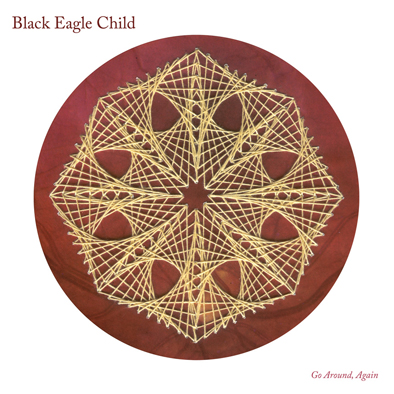 This was recorded at the same time as last year's spectacular Pages on a Plane album (which is still in heavy rotation at my place), but takes things in a dramatically different direction.  I dearly hope this new direction is merely a one-off experiment though, as Michael Jantz's current manic, maximalist psychedelia streak is decidedly not for me.  Fortunately, there is one truly great "old-style" piece included that prevents Go Around, Again from leaving me totally exasperated.
This was recorded at the same time as last year's spectacular Pages on a Plane album (which is still in heavy rotation at my place), but takes things in a dramatically different direction.  I dearly hope this new direction is merely a one-off experiment though, as Michael Jantz's current manic, maximalist psychedelia streak is decidedly not for me.  Fortunately, there is one truly great "old-style" piece included that prevents Go Around, Again from leaving me totally exasperated.
While he has certainly diverged from my expectations in the past, I have always felt that the core of Jantz's aesthetic was a kind of warm, rustic Americana.  I never expected Black Eagle Child to churn out acoustic guitar instrumentals forever, but I also never expected such a drastic shift in tone and approach.  Somewhat perversely, Jantz's acoustic guitar remains prominent for this effort, but it is the backbone of an overwhelming one-man ensemble rather than the intimate focal point.  That would not be a problem if the arrangements and compositions were more compelling, but on pieces like the 15-minute "Sun Cylinder," Michael endlessly flogs the same cheery motif and basically uses all the extra instrumentation solely for doubling and density.  That piece is not a fluke either, as "Running Around the Room" follows a very similar trajectory.  Texturally, Jantz has some good ideas, as the pieces are filled with spirited clopping and clapping, odd burbling, and twinkling xylophones, but it is not quite enough to prop up the fairly weak, one-dimensional material.
But then there is the simple, bittersweet banjo piece "Phrases of the Moon," which easily stands among Jantz's finest work.  Despite featuring a thumping bass drum and a xylophone, it sounds nothing at all like the rest of the album, differing drastically in both mood and approach (opting for spaciousness rather than wall-of-sound layering).  It is pretty much a perfect song in every regard, from the languorous melody to the subtle interplay between instruments to the quietly insistent maracas, yet it somehow manages to get even better around the halfway point due to the appearance of delay-heavy electronics that seem like lingering afterimages.
I think "Phrases" makes this album grudgingly mandatory for Black Eagle Child fans, but I found the other three songs to be pretty grating despite their occasional flashes of inspiration.  All of the other reviews that I have read seem uniformly excited about Jantz's foray into wobbly, candy-colored exuberance though, so perhaps Michael is merely the hapless victim of my subjective aversion to happiness.  I bet history will vindicate me though.
Samples:
 
Read More
- Administrator
- Albums and Singles
 This is the kind of release that easily could fall through the cracks, as it is merely one humble CDR amidst a daunting slew of higher profile reissues, remasters, and Edward Ka-Spel solo efforts.  On one hand, that makes some sense, as much of the material is very abstract and atmospheric.  On the other hand, the narrative title piece captures Ka-Spel at his most bizarre and compelling and should not be missed by anyone interested in his work.
This is the kind of release that easily could fall through the cracks, as it is merely one humble CDR amidst a daunting slew of higher profile reissues, remasters, and Edward Ka-Spel solo efforts.  On one hand, that makes some sense, as much of the material is very abstract and atmospheric.  On the other hand, the narrative title piece captures Ka-Spel at his most bizarre and compelling and should not be missed by anyone interested in his work.
Ka-Spel's bizarre spoken-word tale of the titular being begins the album in brilliant fashion, unfolding the story of a hapless space creature being studied by a doctor.  Content-wise, it almost resembles a children's story, as nothing particularly disturbing ever happens and the nurses all have silly names (also, Ka-Spel gamely provides the female voices himself).  In execution, however, the base material is transformed into something truly gripping and more than a little disturbing.  Much of the credit goes to the band, who bolster Ka-Spel's curious story with simmering ambiance, hollowly shuddering guitars, and timely eruptions of entropy.  However, I suspect Edward could have even made it work without any accompaniment at all, as his deep voice sounds so intense, grave, and insistent that it seems impossible to turn my attention away from it no matter how many times I hear the story.  Also, the pacing is extremely effective and the humor drolly deadpan.  Ka-Spel has rarely been more magnetic and he and the band do not make a single misstep.
Unfortunately, opening in such stellar fashion sets the bar unfairly high for the rest of the album and it cannot help but fall somewhat short.  Nevertheless, most of it is still remarkably good.  The 17-minute drone epic "Premonition 34" is enjoyable and appropriately hallucinatory, culminating in a very satisfying and noisy catharsis.  Then, the much shorter "Poor Louis" sounds like I am hearing a distant free-jazz concert while rapidly dying from a drug overdose, which is certainly a neat and novel experience (and it even manages to end in supremely creepy and unnerving fashion).  Even the album's weakest piece, the closing "29.12.11," is pretty impressive, unleashing a harsh torrent of electronic and field recording chaos over a bludgeoning and insistent rhythm.
I am amazed that an album this impressive is only being released as a CDR, but I suspect that is more due to financial constraints rather than the band feeling like this was somehow a minor effort.  Granted, there are not any real "songs" here, but 18 minutes of sustained excellence is appealing no matter what shape it takes. Additionally, I found this is to be a lot more listenable than many of LPD's more formal and celebrated efforts.  The fact that the Dots can casually and quietly release something this great reminds me yet again that they are among the most woefully under-appreciated bands and that they are always capable of releasing great material, even after 3+ decades.
Samples:
 
 
Read More
- Administrator
- Albums and Singles
Nad Spiro has a new album project : Atomic Spy.
Released in a limited run of 101 copies, is the debut CD on the new GaSaG
imprint within the GEOMETRIK RECORDS family which will be focusing on
unpublished gems and different formats.
Official distribution from www.GEOMETRIKRECORDS.com (gr gsg 01)
Also via Bandcamp : listen to Atomic Spy >> http://gasag.bandcamp.com
In Atomic Spy, Nad Spiro explores further her world of shadows and uncovers
hidden and twisted sounds, electronic spells that occupy your attention.
Her sound fictions evoke secret accidents and car-park conspiracies, body
invasions and auditory hallucinations, ghost transmissions and melodies
from a lost city.
The art work of the cd is by master of photo-montage Josep Renau
(1907-1982), an image in tune with the Atomic Spy's Electricity Zone
Mastered by Ferran Fages.
- - - - -
Rosa Arruti has worked for many years under the alias NAD SPIRO -a solo
venture where complex processed guitars are built into a world of electronic
textures- and her recordings have been released on the pioneer Sspanish
experimental label GEOMETRIK RECORDS .
Member of some of Barcelona's cult underground bands (Mohochemie, Tendre
Tembles...) she has collaborated with other experimentalist like Kim Cascone
or My Cat is an ALIEN.
spiro-mess-age.com snd-fi
Read More
- Administrator
- Albums and Singles
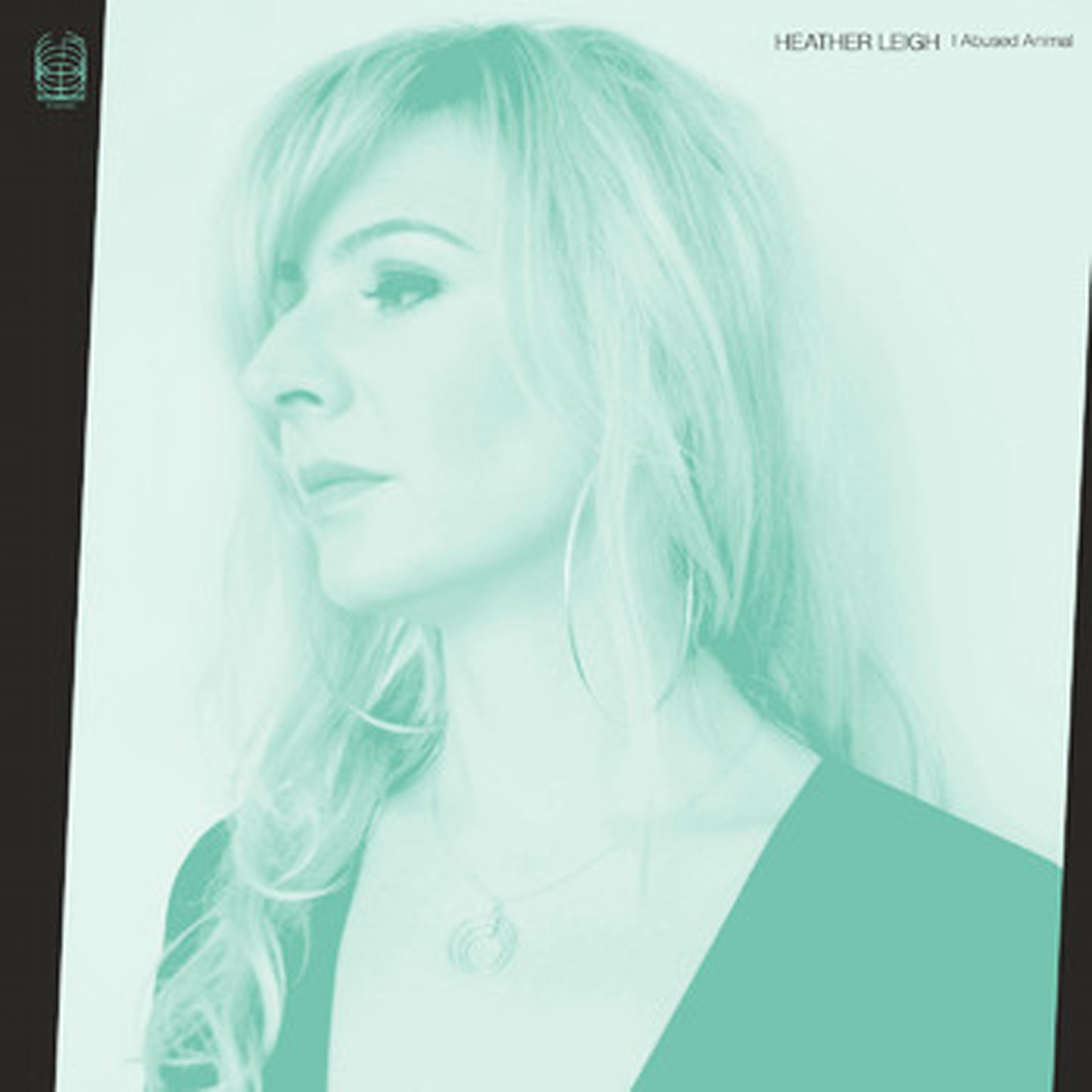
Improbably, this is Leigh’s first true solo studio album after a slew of limited edition home recordings and a lengthy and illustrious career of collaborating with damn near every major artist in the fringes of the improv music scene (Jandek, Chris Corsano, Peter Brötzmann, Smegma, etc.).  Given the volume and diversity of her previous work, I was not at all sure what to expect from I Abused Animal.  I know I did not expect it to sound like it actually does though.  While there is certainly a fair amount of Leigh's distinctively warped and iconoclastic guitar playing, Animal often feels far more like an otherworldly outsider folk album than the work of an experimental/improv guitar luminary.  For the most part, that was a sound directional choice, as Animal is a legitimately unique and compelling album.  I suspect it will probably be a bit too strange and hermetic for some listeners, but that is their problem.
As a genre, the blues has had an extremely unfortunate stylistic trajectory, steadily degenerating from the incredible promise of Robert Johnson and his milieu into a bunch of white baby boomers jamming out and making guitar faces at rib joints.  Fortunately, there was also a much stranger, darker, and more abstract concurrent evolution that eventually yielded artists like Heather Leigh's erstwhile collaborators Jandek and Christina Carter.  Leigh is a similarly intense and idiosyncratic member of that pantheon, channeling life's anguish with uncomfortable directness and casting away any clutter or structure that could potentially distract from the catharsis.  In fact, she even sets aside her pedal steel guitar for the opening title piece, delivering her cryptic and creepy confession as a quavering a capella performance that resembles an old spiritual, a form that she is no doubt intimately familiar with having grown up in West Virginia.  It is a gripping, gutsy, and intimate performance that sets the bar quite high for the rest of the album.  I am not sure the rest of Animal quite rises to the same level, aside from late-album highlight "The Return," but the consolation prize is that Leigh's listenability increases as her intensity decreases.  Great art is rarely comfortable, passive entertainment.
While the addition of guitar does generally make the remainder of Animal somewhat less haunted-sounding, the other five songs are still quite a long way from anything remotely conventional.  Even at her most melodic and vibrant, as she is on the unexpectedly This Mortal Coil-esque "Quicksand," Leigh reduces her guitar playing to nothing more than an echoing, hyper-minimal four-note repeating pattern.  Elsewhere, such as on the gnarled, vibrato-crazy "All That Heaven Allows," she stomps her distortion pedal and erupts into a wild, one-woman psych-rock freak-out that she somehow manages to wrap a vocal melody around.  It might not be entirely successful as a song, but it is certainly a bold, memorable, and striking effort nonetheless (it sounds like someone mashed together a Big Blood album with an especially lysergic and free-form Blue Cheer live recording).  Later, "Passionate Reluctance" abandons the guitar again for an unexpectedly pretty and folky second vocal performance before Animal plunges back into darkness for good.  "The Return" is my clear pick for album highlight, enhancing one of Leigh's strongest vocal melodies with a distorted, ugly, and intermittently disrupted pattern of heavy guitar swells.  The final "Fairfield Fantasy" achieves a similar degree of warped beauty, albeit in very different fashion: its finger-picked arpeggios are frequently derailed by wild vibrato that transforms the otherwise heavenly piece into something that sounds like a curdled and disorienting Hawaiian nightmare.
While both the songs themselves and Leigh’s singular guitar approach are the obvious draws, I actually found Leigh herself to be Animal’s single most compelling aspect, as her aesthetic is quite a fascinating puzzle to try to wrap my head around.  Aside from frequently sounding possessed, somnambulant, and otherwise alien, Leigh has quite a singular knack for bringing together seemingly very disparate threads and making them all seem perfectly natural (albeit within the context of a very unnatural album).  I can perhaps see how her harsher, more cathartic fare is the inverse of her more melodic, simple, and tender side, but outliers like "I Abuse Animal" and especially the perverse "All That Heaven Allows" muddy the waters quite a bit.  "Heaven" truly feels like someone amusingly dared Leigh to try to make a coherent song from the craziest, messiest acid-rock excess imaginable, which sits quite bizarrely next to the quiet, wide-eyed intensity found elsewhere.  I think she won the bet though.  More importantly, Leigh's many facets somehow all fit together into a satisfying whole and they never feel at all like a jumbled, schizophrenic mess (even though it seems like they should).  In fact, all the various threads only serve to deepen the listening experience, as I Abused Animal easily ranks among the most gripping uneasy listening of the year.
 
 
Read More
- Administrator
- Albums and Singles
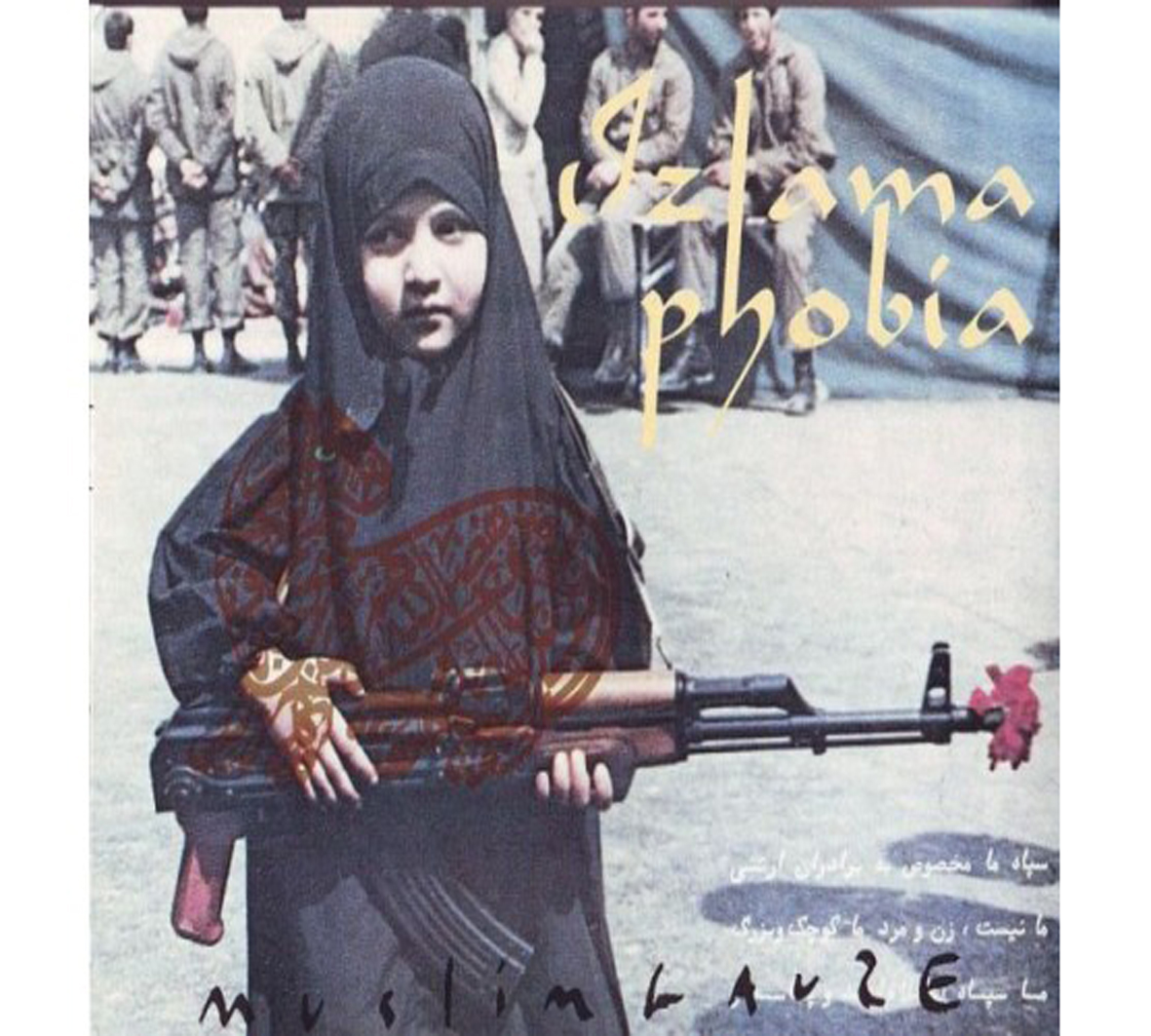 Recently reissued by Staalplaat, this massive 1995 double-album is one of the jewels in Bryn Jones' "industrial phase" and a serious contender for one of the finest albums in the entire Muslimgauze oeuvre.  Naturally, it is packed full of percussion experiments and plenty of obsessive "locked groove" repetition, but Izlamaphobia is unusual among Muslimgauze albums in that Bryn seemed to have had so many great ideas that he did not resort to self-cannibalizing or reworking much at all.  Also, he seemed to have experienced an atypical window of patience and lingered on this album long enough to flesh-out his grooves with some great dub touches rather than just immediately launching into his next project.  Anyone annoyed by the fact that most Muslimgauze songs are just percussion vamps will probably still fail to warm to this release, but Izlamaphobia unquestionably boasts some of the most vibrant and inventive loops of Jones' career.  More importantly, it is simply a great album from start to finish.
Recently reissued by Staalplaat, this massive 1995 double-album is one of the jewels in Bryn Jones' "industrial phase" and a serious contender for one of the finest albums in the entire Muslimgauze oeuvre.  Naturally, it is packed full of percussion experiments and plenty of obsessive "locked groove" repetition, but Izlamaphobia is unusual among Muslimgauze albums in that Bryn seemed to have had so many great ideas that he did not resort to self-cannibalizing or reworking much at all.  Also, he seemed to have experienced an atypical window of patience and lingered on this album long enough to flesh-out his grooves with some great dub touches rather than just immediately launching into his next project.  Anyone annoyed by the fact that most Muslimgauze songs are just percussion vamps will probably still fail to warm to this release, but Izlamaphobia unquestionably boasts some of the most vibrant and inventive loops of Jones' career.  More importantly, it is simply a great album from start to finish.
As properly befits an album from Muslimgauze's industrial era, Izlamaphobia opens with "Hudood Ordinance," a sputtering, squelching, pummeling, grinding, and metallic percussion work-out that sounds about as machine-like as Muslimgauze ever gets.  After that initial salvo, however, the "industrial" tag starts to seem increasingly inappropriate, as the only thing machine-like about many of the other pieces is the obsessive repetition of their loops.  Izlamaphobia is actually quite an unusual and varied album within the Muslimgauze discography, especially on the second disc, as Jones apparently started to grow weary with his relentless onslaught of grooves and starting exploring some more abstract and experimental themes.  Or maybe he just ran out of cool beats before he had a full double-album.  Regardless of his motivation, he covered an unexpected amount of stylistic territory–just about every phase of Muslimgauze's career bleeds into this album at one point or another.
The best pieces, of course, tend to be the ones that boast the best (and most fully realized) grooves.  In that regard, the propulsively shuffling "Gilded Madrasa" is a definite highlight, as it also benefits from a haunting melodic snippet, an ideal duration, and an impressive knack for dynamics (it never gets boring because elements are quite prone to stuttering or dropping out at unexpected times).  Other highlights include the buzzing tambura and break-beats of "The Public Flogger of Lahore" and the backwards percussion and water-driven pulse of "The Emir of Aqua."  The more bizarre pieces also tend to work quite well.  The best of the lot is probably "The Ottoman Muzeum Of Cherished Momentos," which embellishes its wonderfully clanking and plinking rhythm with an unexpectedly loud exhalation ('80s hip-hop beatboxing, Muslimgauze-style!).  The charmingly titled "Zindan Bug Pit" is yet another strange delight, taking an obsessively repeating metallic percussion pattern and warping it with counter-intuitively treble-heavy EQ and a host of dub-influenced disruptions.
As mentioned earlier, the second disc features an unexpected number of varied divergences from the standard Muslimgauze template.  On a couple of pieces, for example, Bryn plunges wholeheartedly into the disorienting potential of playing loops backwards, most notably with the nightmarish and hallucinatory "The Fragrance Aroma" and the blearily languorous "The Landless of Bazzars."  Jones plays with time yet again on "The Suffocator of Hindustani," slowing a looped tambura motif to a menacing crawl while ratcheting up the hiss and sizzle.  Elsewhere, "The Limb Amputator of Riyadh" resembles nothing less than a hip-hop DJ trying to get a party started in the middle of a tornado.  "The Female Guand of Libya," on the other hand, seems like it has all the makings of the usual Muslimgauze fare, but it is purposely hamstrung by a stalled loop that endlessly maintains a sickly sway that prevents the song from ever moving forward.  None of the more experimental pieces are among the album's best, but all are definitely welcome and none feel like filler.  If anything, they provide welcome contrast for Jones' more beat-driven fare and deepen Izlamaphobia's immersive spell of mystery, exoticism, and increasing unreality (or at least a heavily stylized hyper-reality).
While it unquestionably boasts many more instant classics than most other Muslimgauze albums, the primary appeal of Izlamaphobia lies in experiencing it in its entirety.  There are plenty of inventive, wonderful grooves to be found all over Jones' insanely voluminous discography, but it is truly rare to get to experience such a painstakingly crafted, memorable, and deeply surreal tour of Jones' imagined Middle East.  A few pieces are too beat-centric to make much of a significant impact, but they are in the minority and Jones was a goddamn wizard at weaving shifting and evocative atmospheres here.  I imagine this album is a lot like wandering through a crowded bazaar in an exotic city, but with the beauty and menace both amplified (though the orchids, magicians, and views of the Nile seem a bit outnumbered by the limb amputators, poisoners, suffocators, and floggers, if the song titles are any indication).  If Izlamaphobia has a flaw, it is only the one inherent in every Muslimgauze album: just about every piece is a groove that begins and ends without a hell of a lot of development in between.  That is Muslimgauze though and Izlamaphobia is one of the best (and most sustained) versions of Bryn Jones' unique brilliance around.
 
Read More
- Administrator
- Albums and Singles
 Eight years can be a lifetime in music (the entire Beatles career spanned eight years, for example). In 2007 the first track from this album showed up, "Party Pills," and it seemed as if the forthcoming Soft Pink Truth album was bound to be a killer. Eight years later the full-length has finally surfaced, and, well, it sure as hell is.
Eight years can be a lifetime in music (the entire Beatles career spanned eight years, for example). In 2007 the first track from this album showed up, "Party Pills," and it seemed as if the forthcoming Soft Pink Truth album was bound to be a killer. Eight years later the full-length has finally surfaced, and, well, it sure as hell is.
Perhaps the concept wasn't fully formulated in 2007, but at some point long ago, Drew Daniel was assembling music primarily around YouTube samples, only to finish in the last month and unleash this collection without much warning. Eight songs are now available in a pay-what-you-want model, direct from Daniel's bandcamp site for Soft Pink Truth. Ironically, perhaps, the concept perfectly matches with the title bestowed on the project long before the explosion of bandcamp.
Aesthetically, the album is more in line with Daniel's debut LP as Soft Pink Truth, Do You Party? in a few major ways. Primarily, it is original in its unoriginality: while these songs are built from samples, the tunes are original compositions and not a set of indie punk or death metal covers. I don't feel like I'm somehow missing out because I'm not intimately familiar with an original version of a Venom or Angry Samoans song. Perhaps due to this aspect (since it is a collection of non-covers) Why Pay More? is pretty much completely void of sung vocals. It makes the album far more sincere and much less of a gimmick as a whole. (And I don't have to endure over-processed vocals growling of death, deviance, and damnation.)
Additionally, it is much dancier than Why Do the Heathen Rage? and Do You Want New Wave?, and that's a good thing. While I have been a long admirer or Drew Daniel's talent as a composer both in solo work and in Matmos, he absolutely shines working within the confines of a dance format. Absolute highlights for me include the upbeat "I Love Your Ass" (which opens up almost sounding like an homage to G-Force era Greater Than One), the deep grooves of album opener, "Are You Looking?," and the disco of closer "Fire Island of the Mind."
Why Pay More? is a much more enjoyable listen start to finish and certainly will be getting far more mileage than the previous two full-lengths. As an added bonus, the each downloaded MP3 files from bandcamp comes embedded with an individual image to go along with that tune. Hopefully the next collection will be of industrial covers or at least somehow, we will finally get to hear a definitive studio version of SPT's "The Anal Staircase," but for now Why Pay More? is a much appreciated surprise gift from Mr. Daniel.
 
 
Read More
- Administrator
- Albums and Singles
 Lush only recorded three albums, but the amount of music the group amassed in their brief career is astounding. I count four distinct phases in their time: an an abrasive noise phase followed by a wall-of-sound (shoegaze?) prettiness, a brief flirt with some deep introspection, and ending with Britpop. Now that they have announced their re-emergence, 4AD has assembled this collection which I'm excited about, yet only slightly annoyed at.
Lush only recorded three albums, but the amount of music the group amassed in their brief career is astounding. I count four distinct phases in their time: an an abrasive noise phase followed by a wall-of-sound (shoegaze?) prettiness, a brief flirt with some deep introspection, and ending with Britpop. Now that they have announced their re-emergence, 4AD has assembled this collection which I'm excited about, yet only slightly annoyed at.
4AD
Winning points for the collection include the inclusion of numerous demos, sessions, and B-sides, the beautiful packaging, and the updated sound. I don't know if the music has been fully remastered, but it certainly sounds louder and fuller, thankfully, than the original releases (without any "brick-walling"). This was always a point of contention for their earlier music: as bombastic as it was, there was something about CD mastering in the late '80s and early '90s that didn't serve this music appropriately. Mastering could be simply atrocious sometimes: low frequencies were dampened for the sake of vinyl mastering, since phonograph preamps would correct for that end of the spectrum, but CD players didn't, and many companies simply handed over the LP master recordings to the CD plant. Despite the music spanning the various phases of the group, the rich sound on Chorus remains consistent and doesn't waiver from disc to disc.
Aesthetically, however, Chorus doesn't make for a great listen start to finish. Lush had evolved so much that to throw everything together with an approximate chronology feels a bit clumsy. The 3 full length albums, Spooky, Split, and Lovelife are bookended by the collections Gala and Topolino. The group's history, however, begins with the mostly dissonant 1989 EP Scar. When heard first, followed by the follow-up EPs of Mad Love and Sweetness and Light, the trajectory makes sense: it is evident how quickly the group evolved into a pop song powerhouse but didn't leave the noisy roots behind. Gala, on the other hand, was a collection, arranged primarily for the North American market that didn't purchase and promote singles/EPs in the way the Europeans did. So it makes sense that the current single appeared first on Gala, but on Chorus, it's awkward, even moreso when radio sessions from 1994 and 1996 appear as the bonus for the disc that is primarily 1990 material.
Spooky was the first full-length album, and with the production of Robin Guthrie, was a monster debut. The guitar layers are rich, blanketed by the shimmering vocal harmonies on top, neither of which detract from the driving rhythm section. Bonus material comes from the Black Spring and For Love EPs that led up to Spooky, including many fantastic B-sides such as "God's Gift," "Astronaut," as well as "Outdoor Miner," one of two Wire cover tunes Lush recorded and released. But then it gets awkward again. Instead of including the demo versions from 1991 (which end up on disc four?!), the 1999 remix of "Sweetness and Light" (from the Splendor soundtrack) and the 1994 DJ Spooky remix of "Undertow" appear. Did some youngster at 4AD mistake _DJ Spooky_ with the album Spooky because this mix is out of place.
I think I started to fall out-of-love with Lush on Split. The album was inconsistent on the whole and a bit of an identity crisis. It was more melancholy than not, and lacked the overall vigor of Spooky, furthermore I was never a fan of the breakthrough hit single, "Hypocrite." "Desire Lines," on the other hand, released as a single on the same day, is a masterpiece: an epic piece of pure bliss that patiently evolves over its creepy 7¬Ω minute duration. It was a bold choice as a single and pure heaven, even in the demo version which appears oddly on disc four of the set. Split also had a the pop genius tune "Lovelife," with an undeniably infectious riff that could have easily been made it a hit single. Once again the bonus track selection leaves me confused. The two tunes from the Hypocrite EP appear, including the wonderful Young Marble Giants cover, "Love At First Sight," and two tunes from the Desire Lines EP appear, however the remix of "Lovelife" is left off and appears nowhere on the set. Also notably absent on the set is the version of "The Childcatcher" from the 1994 4AD compilation All Virgos Are Mad and the version of "Tinkerbell" from Volume Ten. I'm thankful for the acoustic versions featured, but they're all from 1996 and are out of place here, especially as two appeared as B-sides to 1996 singles.Other 1994 recordings such as "Rupert the Bear," "Lit Up (demo)," and "All This Useless Beauty," would make more sense here, rather than scattered between discs four and five.
Lovelife has to be my least favorite Lush album. Despite it being much more upbeat than Split, all the power, energy, and innovation gave way to snotty Britpop. Miki Berenyi's accent became over-exaggerated on just about every single song: it's almost as if this was an entirely different singer from the early EPs. "Ladykillers" seems like "Hypocrite" part 2, "Single Girl" wasn't much better but at least more tolerable, and "Ciao!," featuring Jarvis Cocker remains pretty unlistenable. "Last Night" is clearly the album's highlight, as it sounds like they took their time and focused well on composition, rather than simply tossing together any old riff and attitude. (The stellar hexadecimal dub of "Last Night" on the 500 EP is criminally absent from this collection too.)
The fifth disc, Topolino, was originally a collection of music from the singles released from the Lovelife album. As a collection, I enjoy it much more than Lovelife as an LP. Highlights include the stunning cover of Magnetic Fields' "I Have the Moon," the original "Sweetie," (for the first time on disc), and "Piledriver," a rare song written by drummer Chris Acland, who took his own life later in 1996, ending Lush. Once again, however, the chronology of bonus material is wrong. I can't figure out why the 1996 acoustic versions of "500," "Kiss Chase," and "Olympia" ended up on the 1994 disc 3, but it's a pleasure to have "Rupert the Bear" finally!
Perhaps I'm being too harsh (fans are the worst, right?), and there's plenty more to be thankful for (radio sessions, demos, and other previously unreleased music along with a very nice sounding mastering job) than not, but I wouldn't unload all your original singles yet!
 
Read More
- Administrator
- Albums and Singles
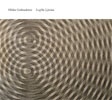
On her third solo album (the title being Icelandic for "Allow the Light"), Hildur Guðnadóttir presents a performance that is entirely live (without audience) of just cello, voice and electronics, which begins deceptively simple, but is soon molded into a rich work of intimate beauty as much as it is a complex study of the most rudimentary sounds in a compelling structure.
Consisting only of two pieces, the short "Prelude" is exactly that:a short, sparse opening of dry, unaffected cello playing that may have functioned as much as a warm-up for Hildur as it does for the album as a whole.It leads directly into the 35-minute title track, and the album proper.
Opening with the continued cello and the addition of delicate vocals, the same sparse, intimate vibe continues, insinuating basic expectations for the rest of the album:from the sound and manner of recording, I was expecting an entire album of only strings and voice.Soon the cello drops away entirely, leaving just the vocals to be carefully looped and processed (in real time) into layers, any actual words become secondary to the melody created from the effects.
The returning cello cuts through the fragmented pieces of voice, resulting in a rich combination of natural and electronic sound that builds in density, resulting in a swirling mass of sound that takes a slightly darker turn, hovering ominously over droning low-end cello.The sound shifts in its closing, where the cello becomes less about texture and more about taut, rhythmic swipes that are layered upon themselves, resulting in a jarring, rapid motif that builds and builds into a suspenseful coda, ending what is mostly a reflective, contemplative piece on a tense, almost unsettling note.
As a completely live work, Leyfðu Ljósinu speaks volumes of Hildur Guðnadóttir's ability as both a composer and performer.The building of sound from a delicate voice and cello to a heavy, swirling mass of sound and closing on a tense, rapid note works extremely well from a structural perspective, and the fact that it was all performed in real time with no overdubs or post-processing makes it all the more exceptional.
samples:
 
Read More
- Administrator
- Albums and Singles
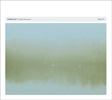
The underlying concept on Below Sea Level is Simon Scott's study of the fens in East Angila, a bit of formerly marshy land that he visited many times in his youth. Utilizing hydrophones and other home made recording devices, Scott captures the sound both around and below sea level (hence the title) and processes it into an often unrecognizable, but nonetheless fascinating world of sound that conveys the nostalgic feelings Simon intended to.
The recordings were then heavily processed and effected via DSP, resulting in the swirling, slightly disjointed but completely effective ambience of "_Sealevel.3" and the slightly sinister splashes of dissonance that arise on "_Sealevel.6" which eventually comes together to resemble the sound of 1990s shoegaze dissembled into its most rudimentary components.
Guitar also appears sporadically, usually in the form of identifiable, but filtered, plucked notes that become the focus of whatever track they show up on."_Sealevel.1", perhaps the most sparse piece here, puts the clear, resonating notes with the sounds of nature around, creating an intimate, personal feel that is struck down when the lower-end noise and dissonance kicks in later on.
Consistent throughout are field recordings of the fens, but not in the traditional sense:the music was played via speakers and then re-recorded with the natural surrounding ambience, providing a very different character to an otherwise well-used sonic technique.Rather than sounding like one piece of a more complex composition, instead the bird songs and foliage rustling feels like a natural and integral bit of ambience that ties the album together.
Not to overly draw comparisons and parallels, but Scott's use natural, marshy ambience and occasionally overt guitar is reminiscent of some of Fennesz's best work, especially with "_Sealevel.4"'s staticy, vintage-laden effects.They have a similar, though still different sense of pleasant nostalgia and hazy, humid summer evenings of years gone by.
The use of heavily layered, processed sounds and unidentifiable environments mixed with familiar ones give Below Sea Level a distinctly unique feel that is an oddly intense album.The feeling is pretty laconic and relaxed, but the sheer amount of layering and manipulationon make it almost overwhelming at times, but it never becomes too much, and instead becomes just the right level of complexity.Simon Scott clearly is working with gentle ambience, but in such a way that it demands attention, never fading into the background like the work of less capable artists.Below Sea Level is also available with a lush, 80 page hardcover book of photographs and essays by Simon on the topic of the fens, fleshing out the themes and imagery greatly.
samples:
 
Read More
- Creaig Dunton
- Albums and Singles
 On their debut EP, Relations deliver four tracks that could come across as hipster synth-pop nostalgia, but the earnestness and catchiness of the songs make that a non-issue, resulting in a set of tracks that sound familiar, yet new to anyone who grew up with the music of the early 1980s.
On their debut EP, Relations deliver four tracks that could come across as hipster synth-pop nostalgia, but the earnestness and catchiness of the songs make that a non-issue, resulting in a set of tracks that sound familiar, yet new to anyone who grew up with the music of the early 1980s.
The duo of Terence Murren and Michael Sanders go the extra mile to develop an "authentic" sound:while the drums are programmed, the synths are live, bringing back the slightly imperfect, but memorable days of pre-MIDI electronic pop.The repetitive melodies and rhythms of "Take No Sides" more then recall a bit of Suicide, with slightly more polish and actual guitars, while keeping that occasional punky sloppiness.
"A Savage Way To Live" begins with a lo-fi synth bass line that is initially a bit too dull, but after pulling off in different directions comes together nicely into a catchy stomp that keeps the pop hooks even amid noisy, raw outbursts.On "Careless Days," the mix is scaled back for a more rudimentary structure, with some noisy and therefore great guitar coming in later on.
Considering this is a debut EP, the biggest shortcoming is understandable and easier to swallow.The vocals on all four tracks have the detached, monotone sound that so many post punk and new wave artists traded in, but sound a bit too similar track to track.With more time and recordings, I would not see this to be an enduring problem.
With that out of the way, Relations' debut EP reminds me of a less goth Cold Cave in the sense of they create music aesthetically rooted in the early 1980s, but come across not as a nostalgia act or hipsters riding a trend, but earnest artists working within a genre that they truly love.These four tracks get that precarious balance of pop hooks, odd electronic sounds, and dissonant outbursts right to create memorable "songs," which is too often ignored for the sake of texture and noise.
Read More
